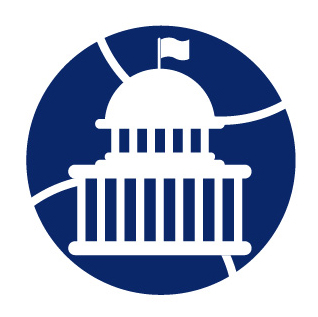A recent news article by the baseball writer R.J. Anderson takes stock of the current use of Big Data and analytics in professional baseball. In his reporting, Anderson found that teams have advanced far beyond the Moneyball era of the early 2000s in both the amount of high quality data they collect and their sophistication in analyzing those data. As I read the article, I reflected on how we must see similar progress in using data to improve public policy and, ultimately, public well-being.
As Anderson notes, all Major League Baseball teams now receive a steady stream of fine-grained data on professional major and minor league players. The most data-hungry teams also collect data on college baseball players, instructional leagues, and international players and teams. But the bigger challenge remains putting those data to use, especially when it comes to the players and coaches on the field, who have ultimate responsibility for the team’s performance. As one expert explained to Anderson, “...teams need to figure out how to communicate the information and insights they’re capturing more effectively to players and coaches...You can have the most analytically savvy front office in baseball, but if you can’t use that information to help your players get better, you’re severely limiting the upside of your efforts.”
This challenge was brought to life in the 2011 film adaptation of the original Moneyball book, which chronicled the early use of data and analytics in the Oakland Athletics organization. In the film, much of the drama centers on the gulf between the team’s old-fashioned manager, played by Philip Seymour Hoffman, and the younger statistics guru, played by Jonah Hill, who is hired by the organization to ramp up the team’s use of data and analytics. The clashing philosophies of these characters makes for a rough start, but the team’s performance eventually takes off after the organization aligns what’s happening on the field with the data provided by the front office.
Using Data Day to Day
A similar challenge exists in the ongoing efforts to bring the Moneyball perspective to government and public sector programs. In recent years, federal and state agencies have taken major steps to develop and improve the data systems, technologies, and analysis tools necessary to support the monitoring and operation of public sector programs. As a researcher at Mathematica, when I talk to the managers and frontline staff working at the programs I evaluate, they recognize and appreciate this growing emphasis on data and evidence. But they don’t always see a connection between these efforts and how they perform their day-to-day jobs. They dutifully collect the program performance data increasingly required by their funders. But they view these efforts as a service to the funder, not a tool to help improve their own program operations and performance.
It is also essential that we have more education on data and analytics. (Read previous posts by my colleagues Scott Cody and Dan Shapiro for reference.) Many social service programs are run by relatively small nonprofit organizations that do not have a long history of collecting and using data in their program operations. In professional baseball, everyone starts with a shared understanding of basic statistics such as batting average and pitch counts. In the public sector, many organizations are starting from scratch when it comes to collecting, analyzing, and interpreting program data. Reading spreadsheets and bar graphs might come as second nature for people with careers in data science and research, but it’s often new territory for social service professionals whose jobs mostly involve interacting with people.
Putting Tools into Action
 That's why the next phase of Moneyball for government must actively engage the program managers and frontline staff working in the field. Government agencies are right to continue their investments in the data systems, analytic methods, and technologies required to support the monitoring and operation of public sector programs. But the long-term success of these efforts ultimately depends on whether and how the data are put to use. We must make sure the data we’re producing address the many practical, day-to-day challenges faced by social service providers. We must also ensure program staff know how to accurately interpret and best use the growing amount of data and analytics they receive.
That's why the next phase of Moneyball for government must actively engage the program managers and frontline staff working in the field. Government agencies are right to continue their investments in the data systems, analytic methods, and technologies required to support the monitoring and operation of public sector programs. But the long-term success of these efforts ultimately depends on whether and how the data are put to use. We must make sure the data we’re producing address the many practical, day-to-day challenges faced by social service providers. We must also ensure program staff know how to accurately interpret and best use the growing amount of data and analytics they receive.
As one example of success, consider the growing use of geographic information systems and data in local government. Local police departments now routinely use geographic information systems and mapping software to plot real-time crime data for their communities. They use these tools to help answer practical questions, such as when and where to best station their police officers. Based in part on the success of these efforts, local governments have started expanding their use of geographic information systems and data mapping to cover an ever-growing range of services, from planning for future business development to determining the most efficient route for plowing snow from streets. These applications of data work in part because they help program managers and staff solve the practical, day-to-day problems they face. In addition, the use of mapping software gives staff an easy, intuitive way to access and interpret the data.
Although geographic information systems and mapping software have many useful applications in local government, they might not address the challenges faced by other types of social service providers, such as federally funded job training centers, youth after-school programs, or nurse home visiting programs for first-time mothers. To take full advantage of the growing supply of data, these providers must have their own data systems and tools—something equivalent to mapping software in practicality and ease of use, but tailored to the unique requirements and circumstances of each provider. The design of these systems and tools is still an open question—one that researchers and data scientists can solve only through active engagement with program managers and staff.
In their recent book on the evidence-based movement in the federal government, Ron Haskins and Greg Margolis of the Brookings Institution note that one of the overarching goals of this movement is to build a “culture of evidence” in public sector programs—a culture in which state and local program operators regularly use data and evidence to guide decision making, not just on occasion but as a normal part of everyday business. Building this culture of evidence will not happen overnight. But we can greatly improve the chances of success by strengthening the connection between the growing volume of data produced and the skills, interests, and requirements of the program managers and frontline staff working in the field.


